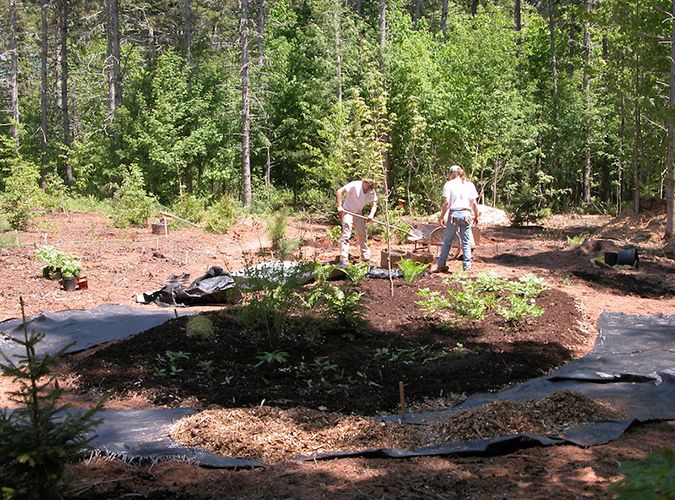Arboretum
Our Arboretum is a place to identify, preserve, propagate and restore native plants.
The arboretum contains over 200 native species and is one of our most important teaching spaces for camps, courses and workshops. We are continually adding new plants and using the arboretum to demonstrate the beauty of native varieties and how native species flourish together to create rich ecosystems.
The original arboretum was planted in 1992 and then expanded in 2000. Since then, it has grown into a young stand of keystone species that includes yellow birch, red oak, white pine and many others. Along the paths that weave beneath is a collection of some of our most beloved shade-loving shrubs. Here you can find everything from ironwood and witch hazel to beaked hazelnut. These, in turn, provide shelter for a diverse collection of wildflowers and ferns, such as wild ginseng, pipsissewa, oak fern and Dutchman’s breeches. Not only is it beautiful throughout the year but has become an important seed source for some of our rarest plants.

In 2014 we began work on a second arboretum located just north of the original. Once part of our nursery, the new location was both sheltered and sunny. With the help of donations and many volunteers, we created a wild garden and teaching area that boasts a huge variety of sun loving native plants. Wildflowers like Canada anemome are framed by graceful willows and lush ostrich fern. Not only are the plants incredibly beautiful, they have evolved alongside our native fauna and together create a complex living ecosystem. Each spring, ruby-throated hummingbirds grace our honey-suckle. Throughout the summer Monarch butterflies flit amongst the milkweed and in the fall flocks of gold finches pick seed from the coneflowers.
In 2017 we added a wetland area, at the east end of our arboretum. It is now overflowing with Cat tails, Meadow Rue, Cotton grass and Marsh Marrigold. This area has since doubled, reaching across the path and includes Pitcher plants, Bakeapple, Blue Vervain and Cinquefoils.
These gardens provide valuable habitats and seed sources. They have become a place to showcase native plants. A place to share knowledge and experiences with each other about the importance of using native plants to create a beautiful and healthy environment.
